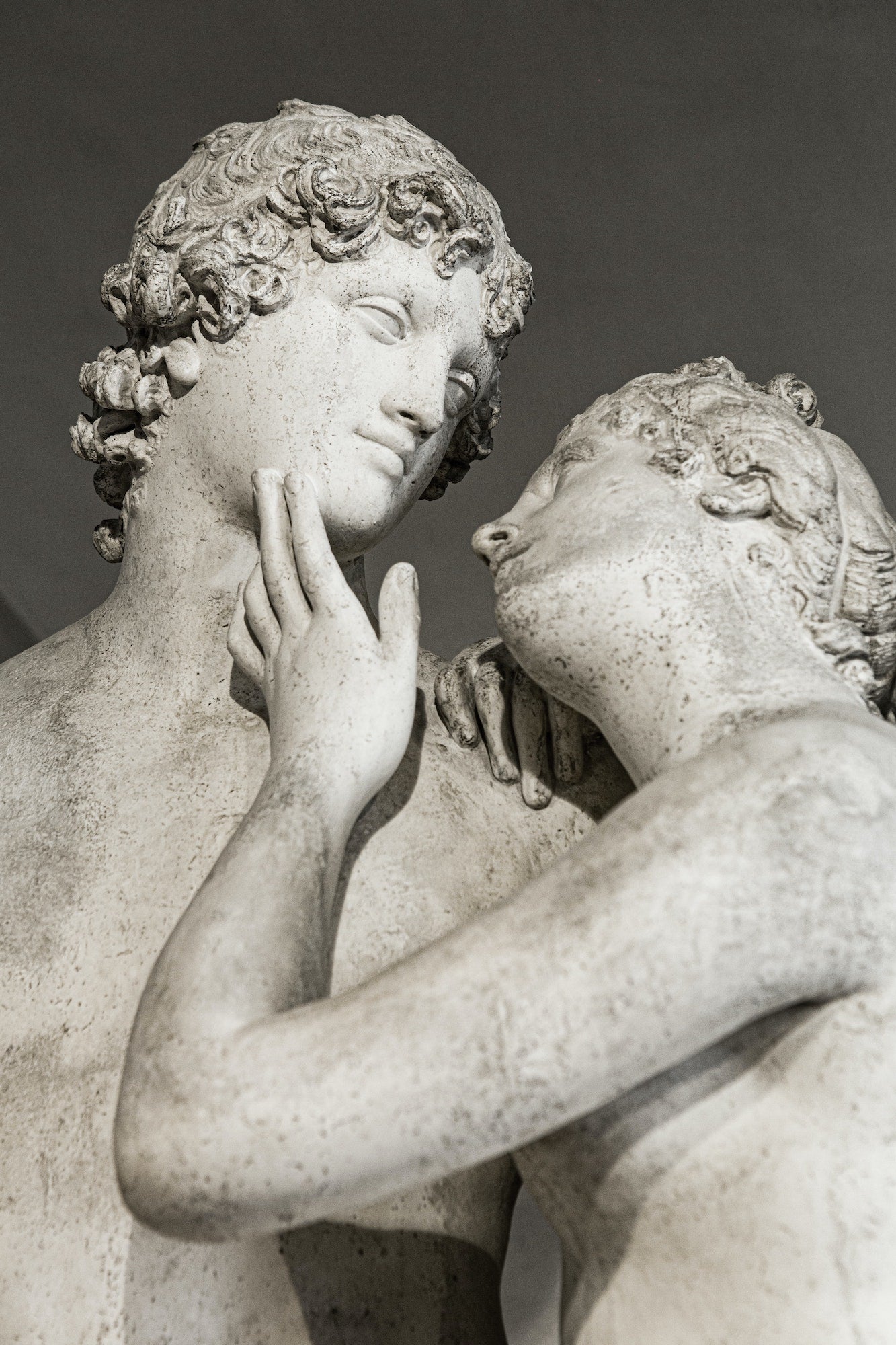A Brief History of Non-Monogamy.

When and why we coupled up.
The impulse to couple up is one that runs deep in western culture. While marriage has become more accessible to all only in the past decade, the institution itself is an old (and largely economic one). But no matter how traditional the rite of matrimony may seem now, global human history has favored a different form of intimacy, which is now being seen in a new context: polyamory.
Of course, modern polyamory is very different from historical polygamy. Polyamory is the practice of engaging in multiple relationships, with the consent and knowledge of all parties involved. Polygamy, on the other hand, is the practice of having more than one spouse. In many historical and cultural contexts, polygamy (unlike polyamory) has often been characterized by a gender imbalance—a man can have many wives, but a woman cannot have several husbands.
Non-monogamy dates all the way back to B.C.E. times, but it’s been reincarnated in different ways over the centuries. And while stereotypes (or purposeful misnomers) may cast this kind of partnership in a definitely unequal, sexist light, it hasn’t always existed as an inherently unequal power balance—especially not today. Here’s how non-monogamy has evolved over time.
When monogamy became the norm
There are different theories about when and why monogamy in humans arose, but all agree on one point: We didn’t start out this way. Some scientists believe that single partnership became an evolutionary advantage because it decreased the spread of STIs, while some anthropologists believe that monogamy arose around the same time that farming did, both to grow wealth and to protect offspring. Either way, this practice caught on, as did the practice of other traditions like dowries and arranged marriages.
Polygamy in the ancient world
Marriage was already an established practice—mainly, with the goal of procreation—by the time civilization was founded in ancient Mesopotamia. But even Hammurabi’s code, a strict set of laws in the society, allowed for polygamy. This ruling, however, had the same goal of marriage as an institution: If a man’s wife could not procreate, he could take a second wife who could.
Polygamy and concubines
Concubines were typically women recognized as sexual partners to a man, though not as spouses—this practice existed all over the ancient world, particularly in upper classes. In ancient Greece, Rome, China, Mongolia, and Japan, powerful men were likely to have concubines, who were expected to bear them offspring. That’s not to say that concubines couldn’t ever be elevated to equal footing—Wu Zetian was a concubine in China who, after the death of two subsequent husbands, became the only empress of the country, ruling from 690 until her death in 705.
Polygamy in Islam
Polygamy is permitted in Islam, with limits: It’s acceptable for men to have up to four wives, but it is not permitted for a woman to have several spouses. However, polygamy isn’t widely practiced—and it’s not necessarily encouraged, either. On the topic, the Qu’ran says, “But if you feel you may not be able to deal justly between them, then marry only one.”
Though polygamy—the act of being married to more than one person—is illegal in the United States, a loophole exists: For some Muslims (an estimated 50,000 to 100,000 according to NPR), this means having a legal marriage with one person, and religious marriages (which aren’t recognized by the government) with others. This can get complicated when immigration and spousal rights come into question.
Polygamy in Mormonism
Again, in spite of U.S. laws, polygamy was recognized as a doctrine in the Mormon faith in 1843, and although the church disavowed it in 1890, some fundamentalists still follow the tradition (there’s even a whole TLC reality show to prove it). While leaders within the religion can sometimes have upwards of 20 wives, more commonly, they’ll have two or three—either because they’re devoted to the original teachings of the church, they aim to have a big family, or a combination of those motivating factors.
Polyamory today
Polygamy is illegal in the United States and many other countries today, but polyamory is perfectly acceptable—and it’s even become far more mainstream in recent decades. You wouldn’t be hard-pressed to find a person in an open relationship by simply swiping through a dating app today—maybe you or your close friends are even in the four to five-percent of Americans who practice consensual or ethical non-monogamy. While that number may not be exceptionally large, it’s one that could be growing, especially when you consider a 2016 study that found that a little over 20-percent of Americans had tried ethical non-mongamy.
The reasons people may choose non-monogamy are varied, though many say that’s a form of intimacy that supports personal growth and communication. Others say that poly relationships can prove especially beneficial in how they foster gender equality. Like any relationship, what’s most important is the ability to communicate your needs and boundaries—whether you’re interested in opening things up or not.




